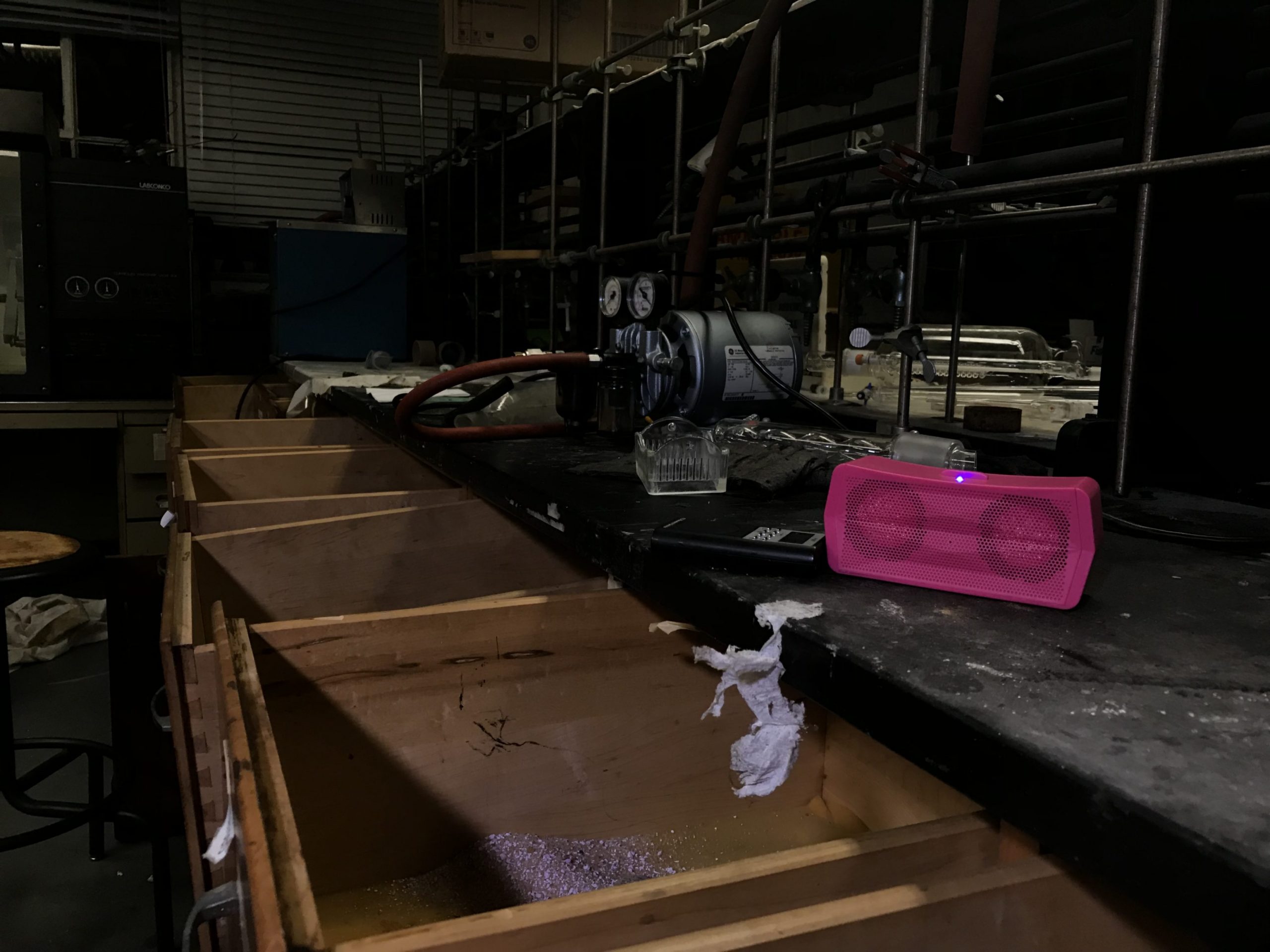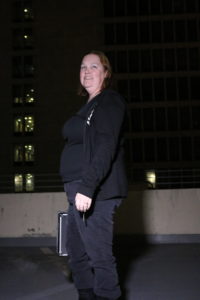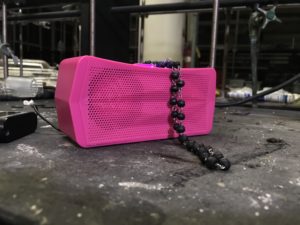
Do you believe in ghosts?
With a little skepticism but an open mind, The Signal brought a paranormal investigator to Georgia State to answer one question: Is our campus haunted?
The team was accompanied by Georgia State University Police Department Officer Hyron Catlyn as a police escort and Jennifer Spear, the paranormal investigator who blogs under the name “The Haunted Feminist.”
The following story should be considered with a healthy dose of skepticism. These are the highlights of any seemingly suspicious activity that took place in the early morning of Oct. 14 at 1 a.m.
THE INVESTIGATION
 To start the investigation off with a bang, the team headed right into home base: The Signal office in Student Center West. Spear concluded that the office was not haunted since there was no evidence from her devices. The investigation then led to Sparks Hall and the lower floors of Kell Hall where Spear determined there was convincing evidence found.
To start the investigation off with a bang, the team headed right into home base: The Signal office in Student Center West. Spear concluded that the office was not haunted since there was no evidence from her devices. The investigation then led to Sparks Hall and the lower floors of Kell Hall where Spear determined there was convincing evidence found.
The Signal headed up to the sixth floor where there was a door labeled, “Do not enter, hazardous material.” Inside, there was an old laboratory in complete ruins.
Glass bottles, beakers and flasks littered the floors and counters, mostly broken. Vials and jugs of liquid chemicals and composition books filled with notes were left behind, covered in dust.
Spear began using a “spirit box,” a device that rapidly flips through radio stations and, supposedly through channeled energy, allows spirits to speak through the stations.
The lab in Kell Hall was different than any place The Signal had investigated that night. The spirit box was more active and the box emitted constant, clear sounds and noises. Previously, the team would wait as long as three minutes before any sound was emitted from the box.
But the strangest of all was the repeated clarity of one voice in particular. The voice was heard over multiple stations in a row: the voice of an older man. Despite this, the words were broken as if someone was losing service on a call.
The box was blaringly loud. Everyone covered their ears and had to shout to communicate. Spear dialed down the volume knob on the box to its quietest setting, but there was no change in volume.
“It’s so loud in here. I can’t hear you. Can you turn it down a little bit?” Spear said, shouting over the noise.
The volume dropped immediately. Everyone in the room was shocked.
The team asked if the voice in the box trusted them or if it was angry with them.
“Stay,” the voice said, as the sounds grew louder.
Spear said the spirit was probably excited and was having trouble keeping the volume low and communicating at the same time. The voice spoke again: “Help.”
The team questioned if going to a different room or floor would be better to communicate. As the team was considering leaving the laboratory, the box crackled out a response.
“Wait. Stay,” it said.
Spear said she believed the voice seem interested in speaking to the team, who then inquired on the potential spirit’s name.
“Walter,” the box said. After asking it twice if its name was Walter, both times it said, “Yes.”
“Are you here with us?” Spear asked, to the empty room.
“Look closer,” he responded clearly. Everyone repeated what he said in unison to confirm their ears weren’t faulting them.
“Can I take your picture?” Spear asked and pulled out her camera.
“Images,” the voice said. She took several photos but upon later analysis found nothing out of the ordinary.
The team moved into an office connected to the lab and the spirit box’s clarity abruptly changed no voices could be heard, only loud, slow beeping.
“Are you angry the building is being torn down? Is this your home?” Spear said, as she returned to the lab. The voice responded with an audible, “Home.”
The team talked to Walter a while longer, but, slowly, his responses became less prevalent and the team eventually left. After exiting the room, The Signal asked the police escort what he thought of the investigation so far.
“You’re switching channels that people are talking on so you are going to hear things that come together. If you shut it off, you hear something, then you will believe,” Catlyn said. “You’re wasting your time.”
The team headed up the rampway to the next floor, and written on a chalkboard there was what could be an ominous sign or a simple student prank. Written in chalk it said, “There is no escape.” Below that, “Nope? Try upstairs.”
After heading upstairs and finding nothing else of interest and nothing in Langdale Hall other than the realization that the volume button was no longer broken, The Signal concluded that the place with the most activity had already been found and called it a night at 3:30 a.m.
One student on the team suggested the spirit belonged to Walter Strauss, the owner of the sneaker shop across from Langdale Hall. Strauss passed away earlier this year after a life of 94 years in which he fled Nazi Germany and built a business in Downtown Atlanta.
THE HISTORY
There are at least four events in the history of Atlanta that could be directly traced to a cause of any paranormal activity on Georgia State’s campus, according to Kyle Cobb, an independent paranormal investigator.
Cobb began paranormal investigations 12 years ago and specializes in demonic activity and agitated spirits.
“Georgia has been occupied for at least 15,000 years,” Cobb said. The first victims of mass death around campus were the Muscogee or “Creek” Indians, of whom it is estimated 90 percent were killed by smallpox due to Spanish exploration.
“In the early 1500s, there were approximately 30,000 to 50,000 Muskogee,” Cobb said. “200 years later, there were only about 2,000 families left.”
Atlanta was founded to serve as a location where the Atlantic and western railroad lines met and was consequently nicknamed “Terminus.”
“To build this railroad, they relied on slave labor,” he said. “This station was essentially the modern Five Points in Atlanta, right on Georgia State campus.”
The Civil War was the next period of mass death on campus grounds. “There were all sorts of skirmishes around the city of Atlanta but also a particularly huge battle,” Cobb said.
The Battle of Atlanta saw over 75,000 soldiers engaged with the total estimated casualties in the battle at 9,222.
“You had horrific fighting, the buildings burned, all of these things happening right where your campus is today,” Cobb said.
The fourth and final incident Cobb identified was the influenza outbreak of 1918. In Georgia, 20 million people were killed by the flu in just 18 months. Atlanta was no exception to the epidemic, with 2,000 reported cases at once.
“In Atlanta there were so many dead they were stacked up on the sidewalks like a wood pile,” he said.
Cobb said that between each of these events, Georgia State has a real potential to be haunted. “For certain, all of these events occurred right where the campus is today,” he said.
As the death toll rose, rumors of ghosts and tales of spirits continued to rise with it, leading to the whispers of the supernatural that surround Atlanta’s most haunted locations, including Georgia State.
